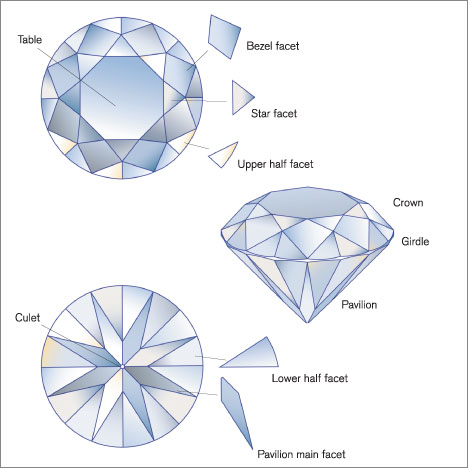Writing likened to cutting a diamond, as both processes involve

writing is like cutting a diamond: You need to cut your facet, one angle to a problem or a story. "According to Diamond Cutter's International's foremost diamond expert, Fred Cuellar (aka “The Diamond Guy”), round brilliant, marquise, oval, cushion, heart, pear and emerald shaped diamonds all feature 58 facets. There are, however, shapes that do not conform to the 58 facet brilliant cut. "
Writing can indeed be likened to cutting a diamond, as both processes involve precision and the creation of facets. In the world of diamonds, facets play a crucial role in determining the brilliance and overall beauty of the gem. Similarly, in writing, each facet represents an angle or perspective on a problem or a story. Let's draw a parallel between diamond facets and the facets of writing:
Table Facet: In the world of diamonds, the table facet is the large, flat surface on top of the gem. In writing, the "table facet" could be compared to the central theme or the main idea of your piece. It's the foundational facet that sets the stage for the rest of the story.
Star Facets: Star facets in diamonds are the smaller, triangular facets that surround the table. In writing, these "star facets" could be seen as the supporting details, examples, or evidence that embellish and enhance the central theme. They provide depth and shine to your narrative.
Main Facets: Main facets in diamonds are the facets on the lower part of the gem. In writing, these "main facets" could represent the different angles or viewpoints you explore in your piece. They could be the various characters' perspectives in a novel or the different arguments in an essay.
Break Facets: Break facets, like those found in diamonds, can be considered the transitional elements in writing. They help smoothly connect one part of your narrative to another, ensuring a cohesive flow.
Culet: The culet, if flat, can be counted as a facet in diamonds. In writing, the "culet facet" could be analogous to the conclusion or resolution of your story. It's the final facet that brings all the angles and perspectives together, offering closure and leaving a lasting impression.
Just as a diamond cutter carefully shapes each facet to maximize a gem's brilliance, a writer crafts their narrative by carefully considering each angle, detail, and perspective to create a compelling and impactful story. In both cases, the end result is a masterpiece that shines brightly and captures the viewer's or reader's imagination.
